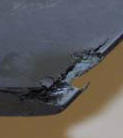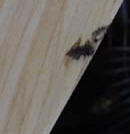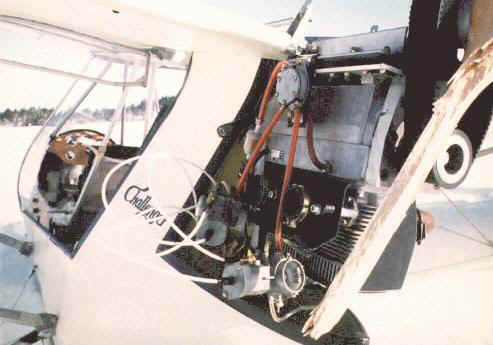Check exhaust springs are safety wired
by lock wire passed loosely through the middle of the center of
the coils, and then fill the spring from one end to the other
full of silicone.
Another way to ensure your springs don't end up in your prop is
to cover the spring with heat shrink, install and safety wire
them, shrink the heat shrink, and put a dab of silicone on the
end of each spring, from the end of the spring hook back to the
spring body. |
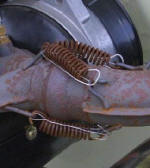 |
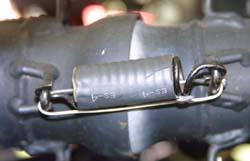
|
|
While these springs are safety wired, when the spring breaks
the parts still end up in the prop |
By applying heat shrink, and then filling the ends with high
temp silicone, if the spring fails the parts are all held in
the silicone. |
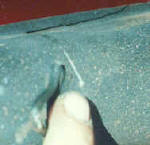 Check your exhaust system for cracks,
which could lead to pieces breaking free and entering the prop,
check the clips that hold the exhaust springs at the attachment
welds, and where the spring hooks into the hook. Check your exhaust system for cracks,
which could lead to pieces breaking free and entering the prop,
check the clips that hold the exhaust springs at the attachment
welds, and where the spring hooks into the hook.
Check at the elbow where the exhaust exits the canister.
|
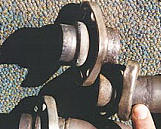 |
|
Top picture shows broken pipe, bottom cracked exhaust |
| If you have
clamp on style egt check them every preflight for cracking or
damage, especially around where the probe goes through the
clamp |
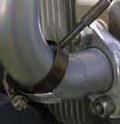 |
|
These probes have been reported to break at the hole where the
probe enters. |
| On the Rotax air cooled engines put a
dab of silicone on the screws holding the two top cooling
shrouds in together. |
 Under
this silicone is the screw that holds the top shroud in place.
All you really have to do is dab piece of silicone from
the cover over the washer and screw head. Under
this silicone is the screw that holds the top shroud in place.
All you really have to do is dab piece of silicone from
the cover over the washer and screw head. |
| Check the two top shrouds for cracks
especially around the exhaust manifold and intake manifolds if
you have a Rotax 377/447 with aluminum shrouds. |
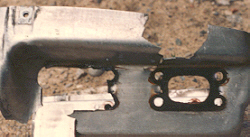 |
| Ensure nylock
nuts or castellated nuts with cotter pins are used on
all fastener. |
| If you have just refueled your plane
check to make sure you have replaced the gas cap, where possible
attach a retain
strap to the cap. |
 |
| If you are flying on a 532/582/618
Rotax engine use safety wire to secure the rotary valve oil tank
cap, and the oil reservoir tank. |
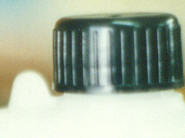 |
|
There is a hole in the cap that is to be used to safety wire
cap to post on tank. |
| Inspect pilot compartment before
entering the cockpit for anything loose or lying around,
cleaning rags, hats, maps. Do not fly wearing sunglasses, or
glasses, unless secured. It is also a
good idea NOT to fly wearing scarf, especially while wearing
it around your neck |
Check your recoil handle for proper
retraction back up into the housing. A securing mechanism for
the handle is a wise investment.
Also when starting the engine,
release the rope slowly, do not just let it go when the engine
starts, it can whip back into the prop.
If the recoil handle does not retract
properly, and requires you to pull on it several times before
it goes back up in, REPLACE the recoil spring immediately.
|
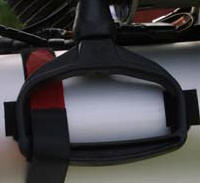 |
|
Here is a cheap and easy way to secure a recoil handle using a
strip of velcro. |
| Secure the airfilters to the
carburetor. K & N Airfilters meant for
aircraft use have a tap built into the air filter to secure it
to the carburetor. On the Bing 54 carb there is a flat metal
tap - drill a hole in it and you can use it to secure the
filter to the carburetor. |
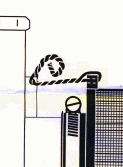 |
| Secure the ends of flaps using velcro
to attach fabric to wing components, such as between the two
wings. When the velcro gets old, worn or wet it looses
its grip. This can result in the unit becoming loose,
flapping in the wind or coming off, going into the prop.
|
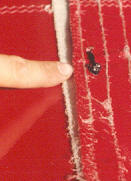 |
| |
Cut a hole using a soldering gun and then
install tie wrap(s) |
| Check helmets and visors are securely
fastened - if your visor can fly OFF if you turn your head in
the airstream, take it off before you fly. |
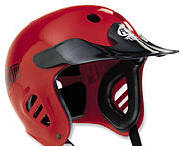 |
| Make sure all pockets are securely
zipped or velcroed up. |
|
| Ensure all baggage is safely stowed, if
carrying extra fuel in a tank in the rear seat remember 5
gallons of fuel weighs nearly 50 lbs! A bungee cord is not
likely to hold that kind of weight especially in turbulence!
Also note that anything
that can move in the second seat could effect the and hinder
control system movement. |
| Make sure all doors are latched
properly and securely, a door blowing open during a take off can
be very disconcerting! |
| Check seatbelts shoulder harnesses,
intercom cables etc. that could get into the propeller arc,
especially when flying solo in a 2-seater. |
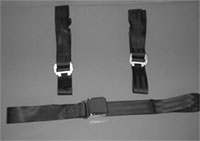 |
| If the runway
surface is loose (e.g. gravel) do not apply full power until
you reach about 10mph to avoid throwing gravel etc. into the
prop. |
| Inspect your propeller carefully for
cracks or damage before every flight. Check your prop bolts for
shearing, improper torque, or looseness. ESPECIALLY if your prop
has a wooden hub.
A wooden prop tends to expand and
contract with moisture, heat, and cold, which of course effects
the torque on your prop bolts. |
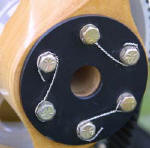 |
| In winter NEVER start your engine until
all of the snow and ice is cleared from the wings, fuselage, and
area AROUND the craft. |
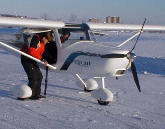 |
| When the
runway is wet, muddy, snow covered be careful that water, mud,
doesn't enter the propeller arc. |
| On floats make sure you have leading
edge protection on the your prop, water hitting a
prop is just like throwing stones through it. |
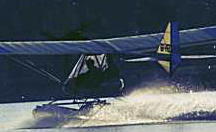 |
Tips:
- Be prepared to switch the engine off
quickly if severe vibration occurs after a prop strike.
- Repairing a prop is something you
should do ONLY if your know what your doing! Any repair or
modification can effect the strength, durability, and
reliability of your propeller. Consult the prop manufacturer
whenever you need to repair a prop!
|
|
|







 Under
this silicone is the screw that holds the top shroud in place.
All you really have to do is dab piece of silicone from
the cover over the washer and screw head.
Under
this silicone is the screw that holds the top shroud in place.
All you really have to do is dab piece of silicone from
the cover over the washer and screw head.










